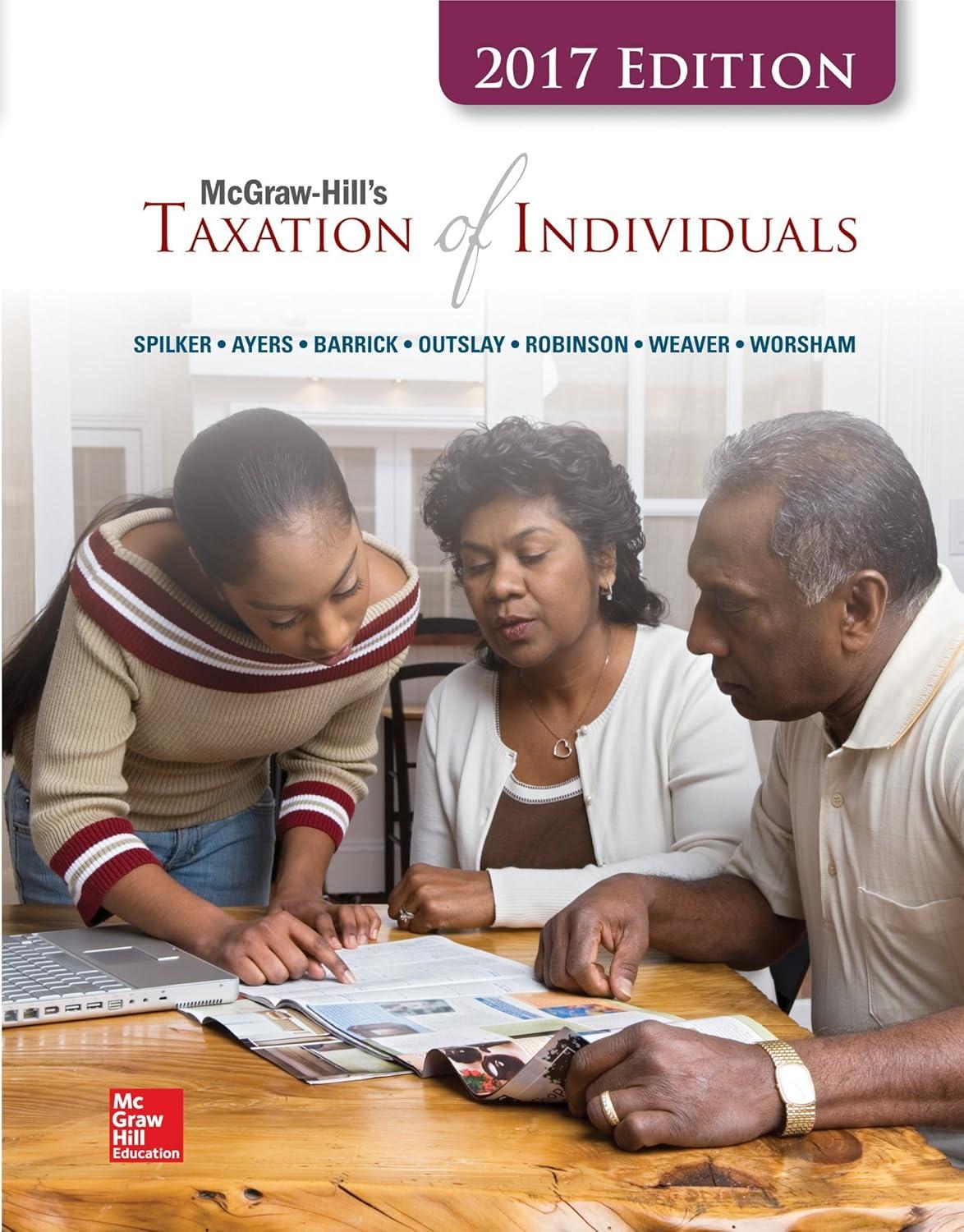Gerry (age 56) and Elaine (age 54) have been married for 12 years and file a joint
Question:
Gerry (age 56) and Elaine (age 54) have been married for 12 years and file a joint tax return. The couple lives in an apartment in downtown Manhattan.
Gerry’s father, Mortey, recently retired from Del Boca Vista Corporation
(DBVC) where he worked for many years. Mortey participated in DBVC’s defined benefit plan. Elaine is an editor and works for Pendent Publishing earning an annual $150,000 salary in 2016. Gerry is a self-employed stand-up comedian and had net business income of $46,000 in 2016. At the advice of their neighbor, Gerry and Elaine have come to you to for help in answering several retirement savings-related questions.
a) The DBVC defined benefit plan specifies a benefit of 1.5 percent for each year of service, up to a maximum of 30 percent (20 years of service), of the average of the employee’s three highest years of salary. Mortey worked for the company for 25 years and earned $75,000, $78,000, and $84,000 over his final three years of service. What is Mortey’s annual benefit from DBVC’s defined benefit plan?
b) Elaine has worked at Pendent Publishing since January 1, 2011. The company offers a defined contribution plan. It matches 100 percent of employee contributions to the plan up to 6 percent of her salary. Prior to 2016, Elaine had contributed $40,000 to the plan and her employer had contributed
$28,000 to the plan. In 2016, Elaine contributed $17,000 to her traditional 401(k). What is the amount of her employer’s matching contribution for 2016? Assuming the company uses a six-year graded vesting schedule, what is Elaine’s vested balance in the plan at the end of 2016 (for simplicity, disregard the plan’s earnings)?
c) Elaine tells you that her employer has offered her $30,000 in 10 years to defer 10 percent of her current salary (defer $15,000). Assuming that the couple’s marginal tax rate is currently 30 percent, they earn an after-tax rate of return of 8 percent, and they expect their marginal tax rate to be 25 percent in 10 years, should Elaine accept her company’s offer? What is the minimum amount she should be willing to accept (ignoring nontax factors and payroll taxes)?
d) Gerry has a SEP IRA and would like to contribute as much as possible to this account. What is the maximum contribution Gerry can make to his SEP IRA in 2016?
e) Assuming Gerry had an individual 401(k), what is the maximum amount he could contribute to the plan in 2016?
f ) Gerry also has a traditional IRA with an account balance of $42,000. He would like to convert the traditional IRA to a Roth IRA. Gerry would like to pay the least amount of tax possible in rolling the account over. What is the least amount of tax Gerry will be required to pay on the rollover?
g) Assume that Gerry rolled over his traditional IRA into a Roth IRA six years ago (rather than in 2016) and that the account now has a balance of $78,000.
The couple is considering buying their first home and would like to pay as much down as possible. They have heard from their friends that they can take the funds from their Roth IRA and use it to buy their first home. Are their friends correct? What would you advise them to do?
h) Assume that Gerry and Elaine made total contributions of $20,000 to their qualified retirement accounts in 2016. Also assume that their AGI is $38,000.
What would be the amount of their saver’s credit for 2016?
Step by Step Answer:

McGraw-Hill's Taxation Of Individuals
ISBN: 9781259729027
2017 Edition
Authors: Brian Spilker, Benjamin Ayers, John Robinson, Edmund Outslay, Ronald Worsham, John Barrick, Connie Weaver






